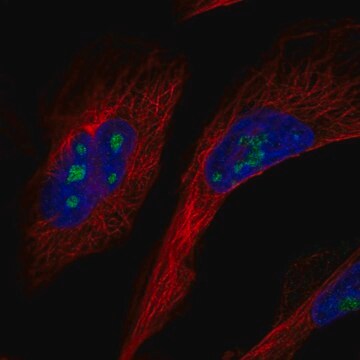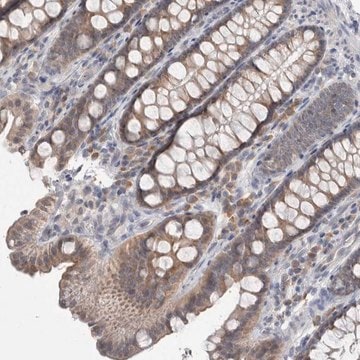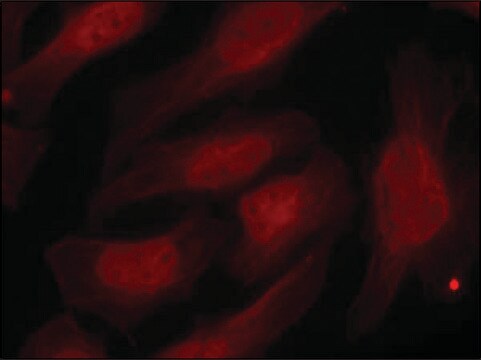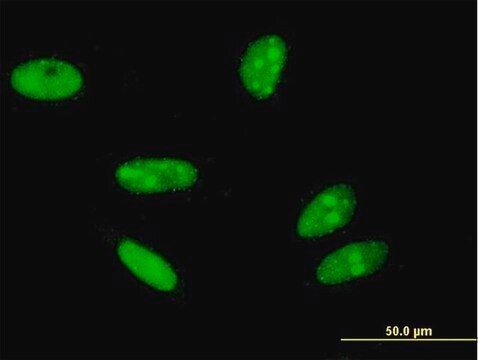05-636
Anti-phospho-Histone H2A.X (Ser139) Antibody, clone JBW301
clone JBW301, Upstate®, from mouse
Synonym(s):
H2AXS139P, Histone H2A.X (phospho S139)
About This Item
Recommended Products
biological source
mouse
Quality Level
antibody form
affinity purified immunoglobulin
clone
JBW301, monoclonal
species reactivity
vertebrates
packaging
antibody small pack of 25 μg
manufacturer/tradename
Upstate®
technique(s)
ChIP: suitable
immunocytochemistry: suitable
immunofluorescence: suitable
immunohistochemistry: suitable
western blot: suitable
isotype
IgG1
NCBI accession no.
UniProt accession no.
shipped in
wet ice
target post-translational modification
phosphorylation (pSer139)
General description
Specificity
Immunogen
Application
Immunohistochemistry Analysis: A representative lot detected Histone H2A.X (pSer139) in RNF168-WT and RNF 168-SA/SEKI mice lung tissue sections (Paraffin). (Xe, X., et al. (2015) Nat. Cell Biol. 20 (3); 320-331).
Chromatin Immunoprecipitation, see Meier, Andreas, et al. EMBO J., 26: 2707-18 (2007) in technical information tab.
Epigenetics & Nuclear Function
Histones
Quality
Immunocytochemistry: 2 μg/ml of this antibody detected phosphorylated histone H2A.X in HeLa cells treated with 0.5 μM staurosporine for 4-6 hours.
Target description
Linkage
Physical form
Storage and Stability
Analysis Note
UV-treated 293 cell extracts, UV-treated HeLa cell extracts or breast cancer tissue
Other Notes
Legal Information
Disclaimer
Storage Class
12 - Non Combustible Liquids
wgk_germany
WGK 1
flash_point_f
Not applicable
flash_point_c
Not applicable
Certificates of Analysis (COA)
Search for Certificates of Analysis (COA) by entering the products Lot/Batch Number. Lot and Batch Numbers can be found on a product’s label following the words ‘Lot’ or ‘Batch’.
Already Own This Product?
Find documentation for the products that you have recently purchased in the Document Library.
Customers Also Viewed
Articles
Explore the basics of working with antibodies including technical information on structure, classes, and normal immunoglobulin ranges.
Antibodies combine with specific antigens to generate an exclusive antibody-antigen complex. Learn about the nature of this bond and its use as a molecular tag for research.
Learn differences in monoclonal vs polyclonal antibodies including how antibodies are generated, clone numbers, and antibody formats.
Our team of scientists has experience in all areas of research including Life Science, Material Science, Chemical Synthesis, Chromatography, Analytical and many others.
Contact Technical Service
















